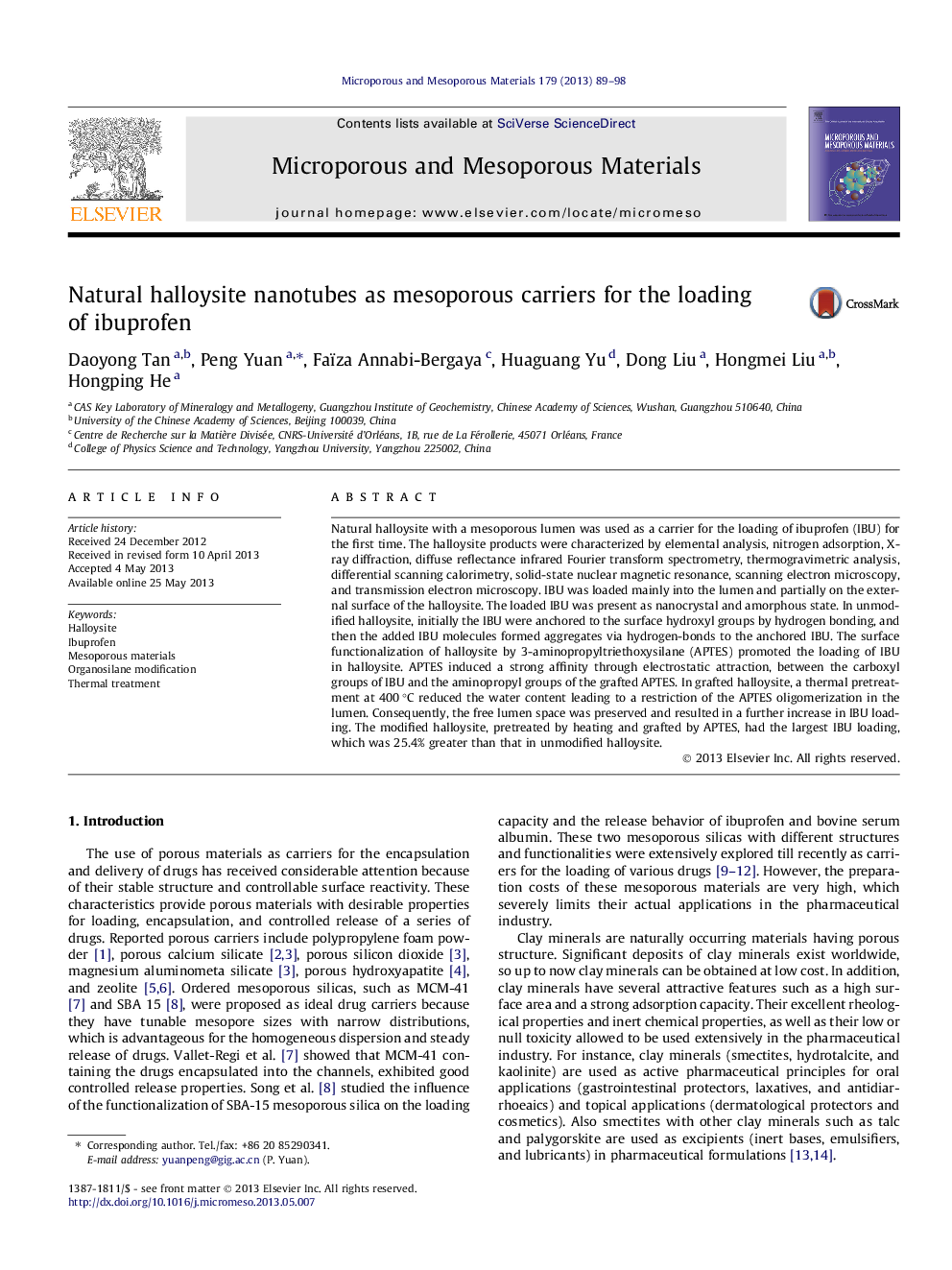| کد مقاله | کد نشریه | سال انتشار | مقاله انگلیسی | نسخه تمام متن |
|---|---|---|---|---|
| 73468 | 49059 | 2013 | 10 صفحه PDF | دانلود رایگان |

• Naturally occurring tubular halloysite was used as a mesoporous carrier for the loading of ibuprofen for the first time.
• Ibuprofen was primarily encapsulated in the lumen and partially loaded on the external surface of the halloysite.
• Organosilane modification of halloysite substantially promoted the loading of ibuprofen.
• Heating helped to preserve the lumen space of APTES-modified halloysite and further increased the ibuprofen loading.
Natural halloysite with a mesoporous lumen was used as a carrier for the loading of ibuprofen (IBU) for the first time. The halloysite products were characterized by elemental analysis, nitrogen adsorption, X-ray diffraction, diffuse reflectance infrared Fourier transform spectrometry, thermogravimetric analysis, differential scanning calorimetry, solid-state nuclear magnetic resonance, scanning electron microscopy, and transmission electron microscopy. IBU was loaded mainly into the lumen and partially on the external surface of the halloysite. The loaded IBU was present as nanocrystal and amorphous state. In unmodified halloysite, initially the IBU were anchored to the surface hydroxyl groups by hydrogen bonding, and then the added IBU molecules formed aggregates via hydrogen-bonds to the anchored IBU. The surface functionalization of halloysite by 3-aminopropyltriethoxysilane (APTES) promoted the loading of IBU in halloysite. APTES induced a strong affinity through electrostatic attraction, between the carboxyl groups of IBU and the aminopropyl groups of the grafted APTES. In grafted halloysite, a thermal pretreatment at 400 °C reduced the water content leading to a restriction of the APTES oligomerization in the lumen. Consequently, the free lumen space was preserved and resulted in a further increase in IBU loading. The modified halloysite, pretreated by heating and grafted by APTES, had the largest IBU loading, which was 25.4% greater than that in unmodified halloysite.
Figure optionsDownload as PowerPoint slide
Journal: Microporous and Mesoporous Materials - Volume 179, 15 September 2013, Pages 89–98